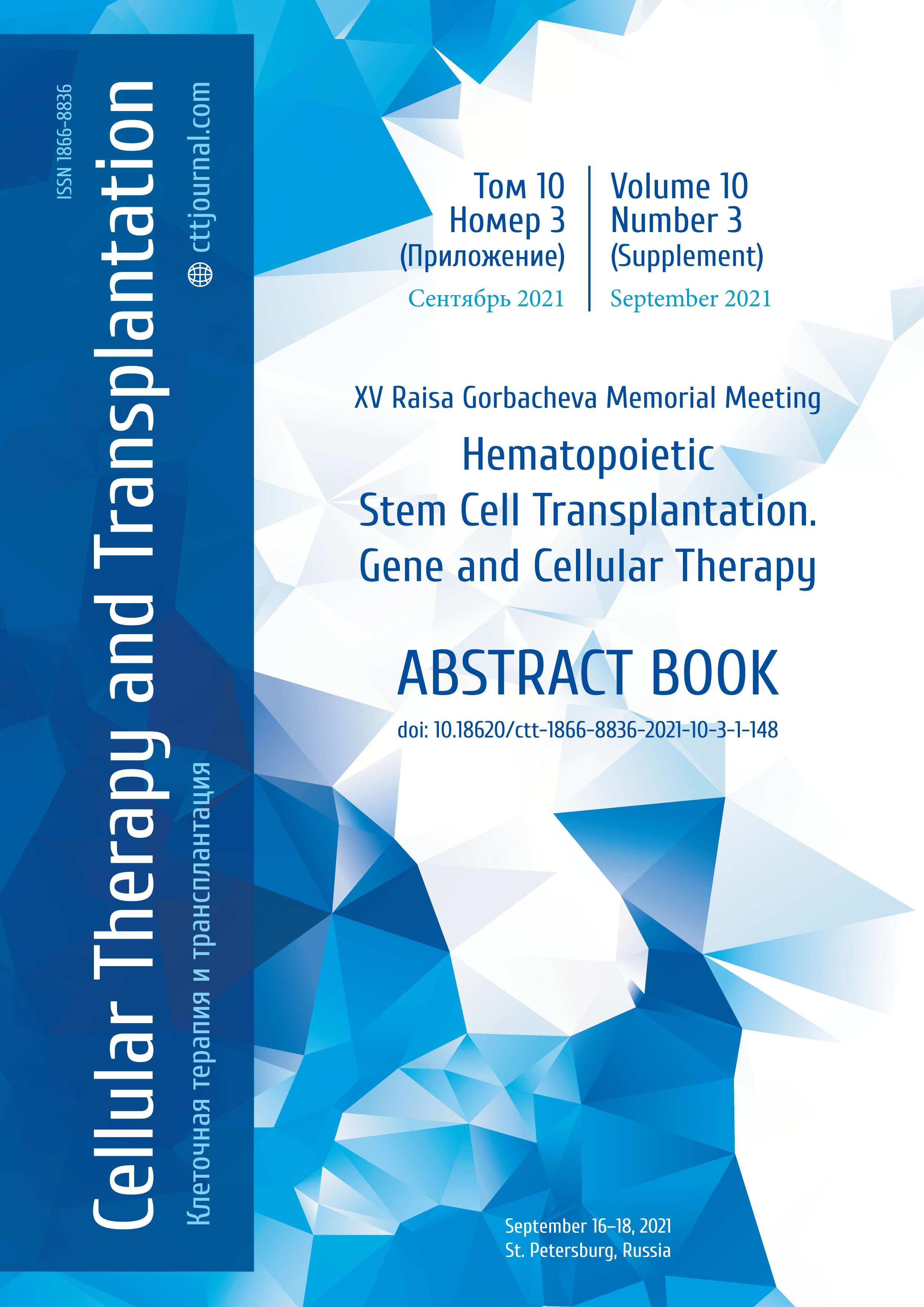AL-02. Treatment options for the patients over 18 years old with refractory/relapsing acute myeloid leukemia
Bella I. Ayubova1, Sergey N. Bondarenko1, Ivan S. Moiseev1, Anna G. Smirnova1, Olga S. Uspenskaya2, Elena V. Karyagina3, Evgenia I. Zhelnova4, Elena V. Babenko1, Ildar M. Barkhatov1, Tatyana L. Gindina1, Alexander D. Kulagin1
1 RM Gorbacheva Research Institute, Pavlov University, St. Petersburg, Russia
2 Leningrad Regional Clinical Hospital, St. Petersburg, Russia
3 City Hospital No.15, St. Petersburg, Russia
4 City Clinical Hospital No.52, Moscow, Russia
Correspondence:
Dr. Bella I. Ayubova, e-mail: bella_ayubova@mail.ru
Summary
Allogeneic hematopoietic stem cell transplantation (allo-HSCT) in patients (pts) with refractory/relapsed acute myeloid leukemia (r/rAML) offers a chance for long-term remission. The use of high-dose cytarabine in combination with purine analogues increases response rates in pts with a primary refractory AML (refAML) from 45% to 65%. The search for targeted drugs to treat r/rAML is a major trend in hematological malignancies. Gemtuzumab ozogamicin* (GO) is a recombinant, humanized anti-CD33 monoclonal antibody covalently attached to the cytotoxic antitumor antibiotic calicheamicin. Our aim was to evaluate efficacy and toxicity of FLAG and GO-FLAG therapy in adult pts with r/rAML and to determine predictors of response to GO-FLAG therapy.
Patients and methods
87 pts were included in the analysis. “FLAG” received 39 pts, with a median age of 34 (18-59). RefAML – 20 pts, relapsed AML (RelAML) – 19 pts. Genetic risk was stratified as favorable – 3/39, 7%; intermediate – 17/39, 44%; unfavorable – 19/39, 49%. “GO-FLAG”: 48 pts at a median age of 34 (18-61). RefAML – 16/48, 33%; RelAML – 32/48, 67%. Distribution by genetics risk: favorable – 5/48, 10%; intermediate – 20/48, 42%; unfavorable – 23/48, 48%.
Results
Overall response (OR) after “FLAG” was achieved in 23/39 (59%), i.e., complete remission (CR), in 46% (n=18); CR with incomplete recovery (PRi/r), in 13% of cases (n=5). Allo-HSCT was performed in 23 pts (59%): haploidentical, 6; matched, 17 (related, 1; unrelated, 16). The median time from OR to allo-HSCT was 55 days. Median follow-up was 42 (0.4-52.6) months. Overall survival (OS) was 28.2% (CI95% 16.5-43.8). The pts with OR (n=23) had two-year OS (2OS) 43.5% (CI95% 25.6-43.2) and two-year disease-free survival (2DFS) was 34.8% (CI95%18.8-55.1). Complications: grade 4 neutropenia; grade 4 thrombocytopenia, 100%; sepsis – 28% (n=11); invasive fungal diseases, 13% (n=5); bacterial pneumonia, 8% (n=3); hemorrhagic complications, 8% (n=3). Early mortality was observed in 10% of the cases (n=4), due to intracranial hemorrhage (n=3); AML progression (n=1). After “GO-FLAG”, OR was achieved in 36/48 (75%), with CR rate of 50%, CRi/r, in 25% of the cases. Pts with extramedullary diseases achieved OR in 87% (13/15), with CR of 60%. The lowest OR rate was in unfavorable genetic cases (p=0.02). Increased OR was observed in the pts with blast levels of <50% (p=0.042) and in relapsed AML (p=0.07). Allo-HSCT after “GO-FLAG” was performed in 25 pts (52%): haploidentical (n=11), matched (n=14; related HSCT, 5 and unrelated, 9). Median time to allo-HSCT was 40 days. Median follow-up was 14.4 (0.4-35) months. OS – 31.3% (CI95% 20-45). Among pts with OR (n=36), 2OS was 38.9% (CI95% 25-55), 2DFS, 27.8% (CI95% 17-44). Complications: grade 4 neutropenia and grade 4 thrombocytopenia were documented in all cases; sepsis, 40% (n=19), invasive fungal diseases, 6% (n=3); bacterial pneumonia, 8% (n=4); severe hemorrhagic complications were seen in 1 case, with no SOS observed. Early mortality comprised 4/48 (8%; CI95% 3-20), due to infections (n=3), AML progression (n=1).
Conclusions
“FLAG” and “GO-FLAG” showed high efficacy and acceptable toxicity. In the “GO-FLAG” group, a higher rate of OR was observed (75% vs 59%, p=0.16). Significantly increased OR rate was achieved after “GO-FLAG” in the pts with extramedullary disease (87%, p=0.04). The following predictors of clinical response could be considered: blast levels of < 50% (p=0.042), relAML (p=0.07), favorable genetic background (p=0.02).
*GO was provided as part of the early access program.
Keywords
Acute myeloid leukemia, target therapy, gemtuzumab ozogamicin.


